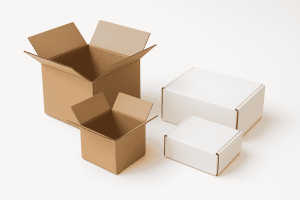The packaging sector has undergone a revolution in recent years – starting with the Covid19 pandemic, which further boosted the e-commerce trend (that had already been strengthening even before that). This growth was so great that it caused an increase in prices and even a lack of inputs for the production of cardboard boxes and other products derived from cellulose.
But what will come next? What are the trends related to cardboard packaging for the coming years? Thinking about it – and to help those who use this type of material on a daily basis, we prepared this post with some data related to the years to come.
Will the Packaging Segment Continue to Grow?
Yes! According to a survey by Smithers, a multinational company specialized in testing, consulting, information and compliance services, there will be an increase in the packaging market in the next five years. The research, called The Future of Global Packaging to 2024, indicates that this market is expected to grow from US$ 917 billion to US$ 1.05 trillion by 2024. The sector’s annual growth (CAGR) is expected to be 2.8%. Within this growth, the Asian market stands out as the largest global consumer of packaging, followed by North America and Western Europe.
Trends in the Segment
Among the trends for the next three years pointed out by the Report, some stand out, such as:
- Sustainability
Sustainability has been in focus for some years and this should intensify in the coming years. Environmental issues ceased to be a discussion for academics a long time ago and consumers want to get involved in them too – we have already seen here that cardboard packaging gains the preference of those who shop online precisely for this reason. Cardboard boxes are more easily recyclable and compostable than other types of packaging.
For this reason, the Smithers Report predicts that cardboard boxes will continue to rise, accompanied by materials such as paper, recyclable plastic (PET) and bioplastics. Non-recyclable plastics should have a drop, as well as the use of unnecessary secondary packaging (such as putting an item of clothing in a non-recyclable plastic packaging and then in a cardboard packaging to be sent to the purchaser, for example).
- Asian Growth
As already mentioned above, the Asian market is the main consumer of packaging and this should intensify in the coming years. The main sectors cited by the survey are food, luxury products and cosmetics.
- Flexible Packaging
Flexible packaging will gain more and more space. This means that there are more companies selling online choosing to replace inner packaging (such as metal tins and glass jars) with high barrier film packaging for food, for example – so the outer cardboard boxes hold more products. In addition, it is a type of packaging that preserves the products better.
- Growth of the Wellness Industry
The consumption of products linked to wellness and healthcare should boost the use of packaging in this segment, which should surpass that of pharmaceutical products.
- Convenience
Talking again about food packaging, a segment that we should see growing in the coming years is packaging for on-the-go consumption, such as easy-open and reseal components.
Cardboard Boxes in Vancouver
As we saw above, everything indicates that online shopping – and consequently the use of cardboard boxes – should continue to rise in the coming years. If your company still doesn’t sell via e-commerce, maybe it’s the ideal time to start – and we can help you with cardboard packaging.





Recent Comments